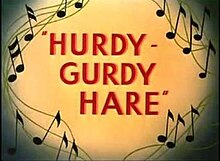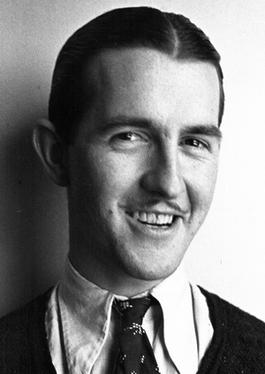
Robert Porter McKimson Sr. was an American animator and illustrator, best known for his work on the Looney Tunes and Merrie Melodies series of cartoons from Warner Bros. Cartoons and later DePatie–Freleng Enterprises. He wrote and directed many animated cartoon shorts starring Bugs Bunny, Daffy Duck, Porky Pig, Foghorn Leghorn, Hippety Hopper, Speedy Gonzales, and the Tasmanian Devil, among other characters. He also developed Bugs Bunny's design in the 1943 short Tortoise Wins by a Hare.

Hippety Hopper is a young kangaroo character in the Warner Bros. Looney Tunes series of cartoons. Robert McKimson introduced Hippety Hopper in Hop, Look and Listen (1948), which established the pattern for future Hippety Hopper cartoons. The character appeared in 14 theatrical cartoons between 1948 and 1964.

Rhapsody Rabbit is a 1946 American animated comedy short film in the Merrie Melodies series, directed by Friz Freleng and featuring Bugs Bunny. The movie was originally released to theaters by Warner Bros. Pictures on November 9, 1946. This short is a follow-up of sorts to Freleng's 1941 Academy Award-nominated Rhapsody in Rivets, which featured the "Hungarian Rhapsody No. 2" by Franz Liszt. The "instrument" used to perform the "Hungarian Rhapsody" in Rhapsody in Rivets is a skyscraper under construction, while this short features Bugs playing the piece at a piano while being pestered by a mouse.

Hillbilly Hare is a 1950 Warner Bros. Merrie Melodies cartoon directed by Robert McKimson. The short was released on August 12, 1950 and stars Bugs Bunny.

Tortoise Wins by a Hare is a Merrie Melodies cartoon released on February 20, 1943, and directed by Bob Clampett. It stars Bugs Bunny and Cecil Turtle. It is a sequel to 1941's Tortoise Beats Hare, with footage from said cartoon briefly shown at the beginning. It is also the first short to feature Robert McKimson's design of Bugs Bunny.
Warner Bros. Cartoons, Inc. was an American animation studio, serving as the in-house animation division of Warner Bros. during the Golden Age of American animation. One of the most successful animation studios in American media history, it was primarily responsible for the Looney Tunes and Merrie Melodies series of animated short films. The characters featured in these cartoons, including Bugs Bunny, Daffy Duck, and Porky Pig, are among the most famous and recognizable characters in the world. Many of the creative staff members at the studio, including directors and animators such as Chuck Jones, Friz Freleng, Robert McKimson, Tex Avery, Robert Clampett, Arthur Davis, and Frank Tashlin, are considered major figures in the art and history of traditional animation.
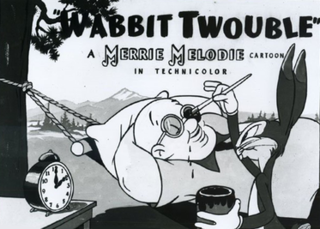
Wabbit Twouble is a Merrie Melodies cartoon starring Bugs Bunny, produced by Leon Schlesinger Productions and released on December 20, 1941, by Warner Bros. Pictures.
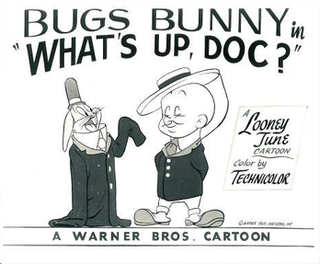
What's Up, Doc? is a Looney Tunes cartoon directed by Robert McKimson and produced by Warner Bros. Cartoons. It was released by Warner Bros. Pictures on June 17, 1950 and stars Bugs Bunny and Elmer Fudd.

French Rarebit is a 1951 Warner Bros. Merrie Melodies animated short, directed by Robert McKimson and written by Tedd Pierce. Released June 30, 1951, the cartoon features Bugs Bunny. The title is a play on "Welsh rarebit", which is also known as "Welsh rabbit".

Homeless Hare is a 1950 Warner Bros. Merrie Melodies cartoon short directed by Chuck Jones. The short was released on March 11, 1950, and stars Bugs Bunny. Some television broadcasts omit the shot of Bugs dropping a brick on Hercules' head. The Blue Ribbon release also removed the shorts original Bugs Bunny in card, joining only Hot Cross Bunny, Knights Must Fall & Rabbit Hood in this distinction.
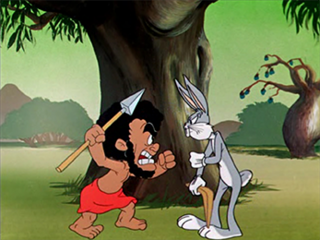
Bushy Hare is a 1950 Warner Bros. Looney Tunes cartoon directed by Robert McKimson. The short was released on November 18, 1950, and stars Bugs Bunny.

Bonanza Bunny is a 1959 Warner Bros. Merrie Melodies cartoon directed by Robert McKimson. The short was released on September 5, 1959, and stars Bugs Bunny. In the cartoon, Bugs faces off with the French-Canadian claim jumper Blacque Jacque Shellacque during a fictionalized version of the Klondike Gold Rush.

Hare Remover is a Merrie Melodies cartoon starring Bugs Bunny and Elmer Fudd, released in 1946. The film was the second Bugs Bunny cartoon to be directed by Frank Tashlin, the first being The Unruly Hare (1945). It was also the last short Tashlin directed before leaving Warner Bros. in 1944 to direct live-action films. His animation unit was handed over to Robert McKimson upon his departure.

Acrobatty Bunny is a 1946 Warner Bros. Looney Tunes short directed by Robert McKimson. The short was released on June 29, 1946, and stars Bugs Bunny and Nero the Lion. This was the first cartoon McKimson directed that starred Bugs Bunny.
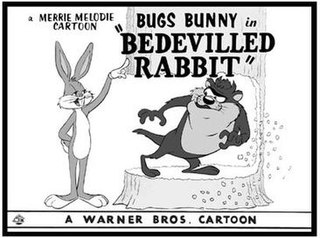
Bedevilled Rabbit is a 1957 Warner Bros. Merrie Melodies short directed by Robert McKimson. The short was released on April 13, 1957, and stars Bugs Bunny. In this cartoon, Bugs is lost in Tasmania, and has to deal with the Tasmanian Devil.
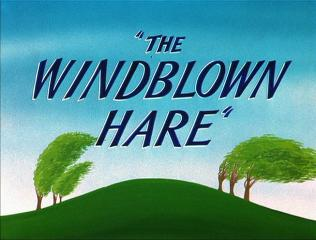
The Windblown Hare is a Warner Bros. Looney Tunes animated short directed by Robert McKimson. The short was released on August 27, 1949, and stars Bugs Bunny. The title, another pun on "hair", refers to Bugs being subjected to the Wolf's "blowing the houses down".
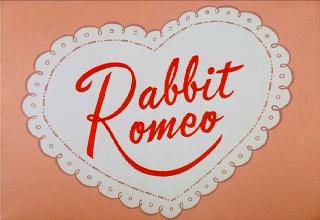
Rabbit Romeo is a 1957 Warner Bros. Merrie Melodies cartoon directed by Robert McKimson. The short was released on December 14, 1957, and stars Bugs Bunny and Elmer Fudd. The film is one of the few pairings of Bugs and Elmer in which Bugs is not hunted throughout the entire picture, and also notable as a cartoon in which Bugs has a romantic encounter.

Bill of Hare is a 1962 Warner Bros. Merrie Melodies cartoon directed by Robert McKimson. The short was released on June 9, 1962, and stars Bugs Bunny and the Tasmanian Devil.
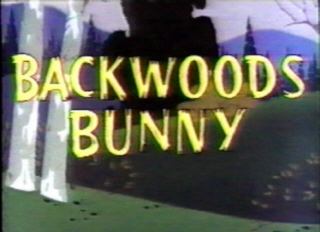
Backwoods Bunny is a 1959 Warner Bros. Merrie Melodies cartoon, directed by Robert McKimson and written by Tedd Pierce. The short was released on June 13, 1959, and stars Bugs Bunny.
